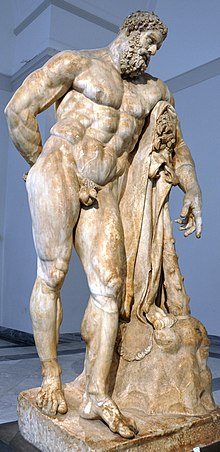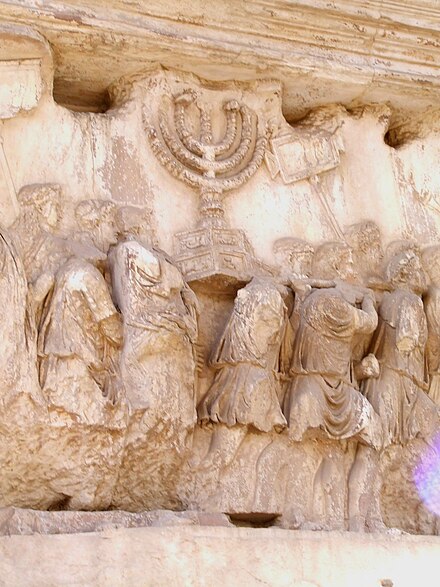Roman architecture
is classical and hardly practical. It could be described as masculine in a sense, with a hint of solitude. No matter how we interpret the structure, we can all agree that it exhibited a solid foundation and architectural form.
The Baths of Caracalla and the Arch of Titus are two such structures that on one hand side represent honor and resolve, but on the other relaxation and educational output.
Baths of Caracalla
Roman Emperor Caracalla
The Roman bathhouse created a location of leisure, or civic amenity, for all those in attendance. Incredibly inventive in their own right, the baths were fashioned with underground heating that provided heat for the bathers. Roman bathhouses like Thermae in Bath, England, have been found all over Rome, however the Baths of Caracalla are the most remarkable.
The Baths of Caracalla are located in Caelian Hill
Farnese Hercules
The Baths of Caracalla operated until the 6th century when Goths destroyed the aqueducts supplying the water to the baths. The Caracalla Baths suffered enormous decay over the centuries, and during the 16th century, the Farnese family
 Access is limited to certain areas to avoid damage to the mosaic floors, although such damage is already clearly visible. Also, a total of 22 well-preserved columns from the ruins are found in the church of Santa Maria in Trastevere, taken there in the 12th century.
Access is limited to certain areas to avoid damage to the mosaic floors, although such damage is already clearly visible. Also, a total of 22 well-preserved columns from the ruins are found in the church of Santa Maria in Trastevere, taken there in the 12th century.During the 20th century, Benito Mussolini introduced the idea of open air operas at the Baths of Caracalla. It's been questioned, however, that the vibrations from the singer's voices are damaging the structure. Nonetheless, Pavarotti Domingo and Carreras performed at the Caracalla Baths in 1990, on the eve of the World Cup.
Arch of Titus
Traditionally, Roman arches were constructed as a focal point for the procession of victorious armies coming home. There are close to 34 arches built in Rome, the Arch of Titus being the oldest.
The Arch of Titus was created in 81 CE, shortly after Titus's death and commissioned by his brother Domitian who succeeded him as emperor. The Arch of Titus is a celebration of Titus's victories including the struggle against Jewish rebels that culminated in the capture of Jerusalem in 70 CE. Sculptures depict the looting of the temples of Jerusalem; some believe the Ark of the Covenant was taken at this time.
There are several scenes carved on the Arch of Titus, one being a new god parading in his chariot, crowned by victory; another in the vault of the arch shows Titus ascending into the heavens on the wings of an eagle.
Over the centuries, the Arch of Titus changed considerably. Many believe there existed a sculpture of Titus on the top of the Arch, however it had been removed during the Middle Ages, and replaced by further sculptures depicting the times. It wasn't until 1822 that Giuseppe Valadier restored the site, dismantling the arch and reconstructing it in its present form.
Also check out:
Although the Romans had depended greatly on the ideals of the Greeks when adopting their art and literature, they themselves developed some of the most innovative of inventions that succeeded Western Civilization. The evolution of Roman law which brought about the idea of a systematic principle for justification, the invention of roads allowed for easier transit for soldiers and citizens, as well as the construction of Roman bridges that still stand today.
Read More: Monday Ground Up: Roman Achievements in Law and Engineering
The Catholic Church at the time of Charlemagne had significant impact on the lives of the Frankish people. There was fusion of cultural ideals which directly influenced family life, sexuality, and the views of children. Marriages were arranged by the fathers and uncles, and wives were expected to remain faithful to their husbands, even if they kept concubines and remained unfaithful to them.
Read More: Monday Ground Up: The Catholic Church During Charlemagne
Picture Sources
















1 Comment:
Wonderful post as always...
Post a Comment
We appreciate comments, but we delete SPAM.